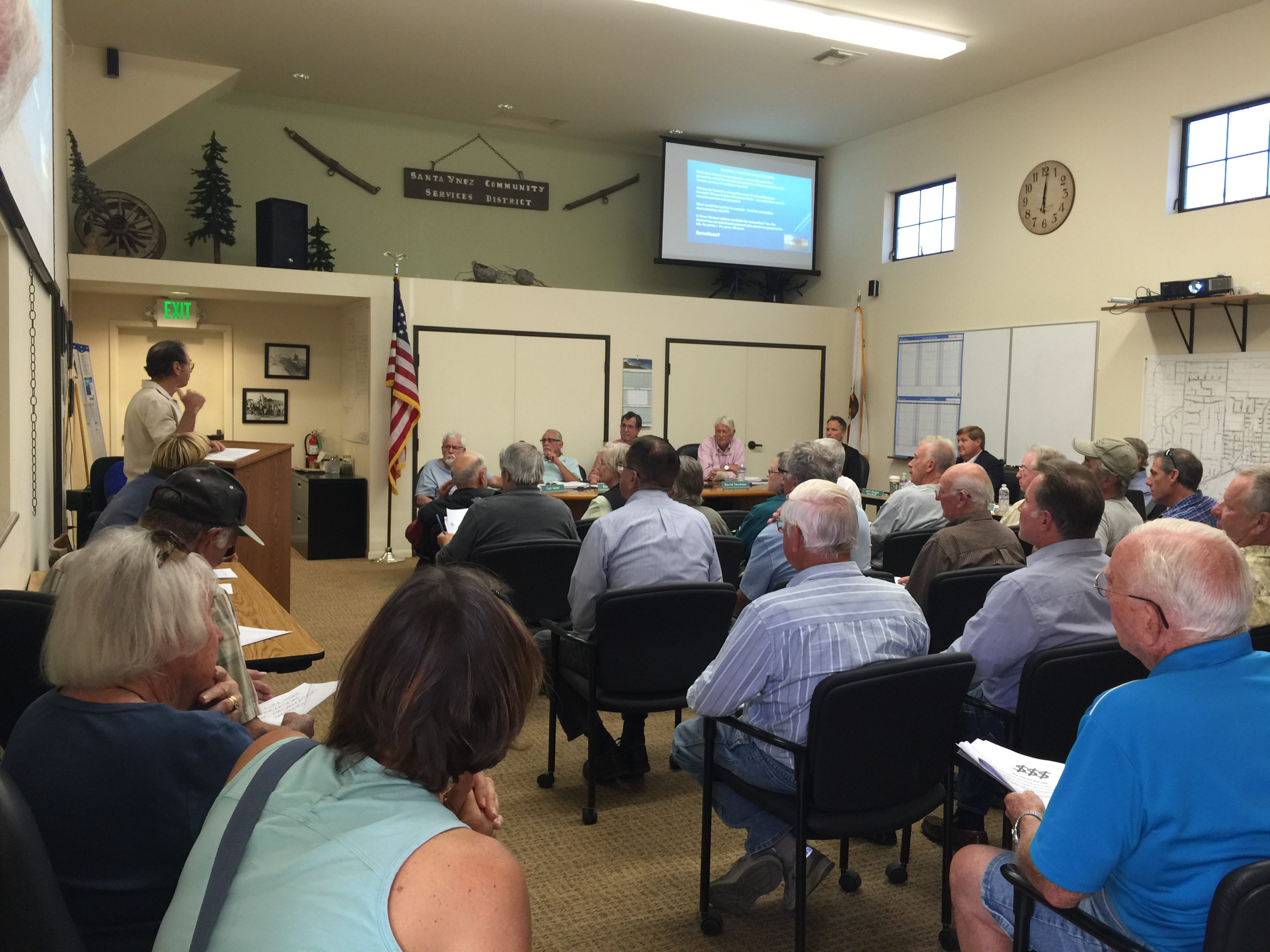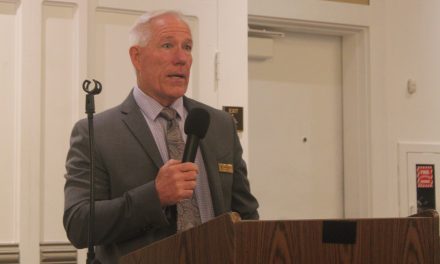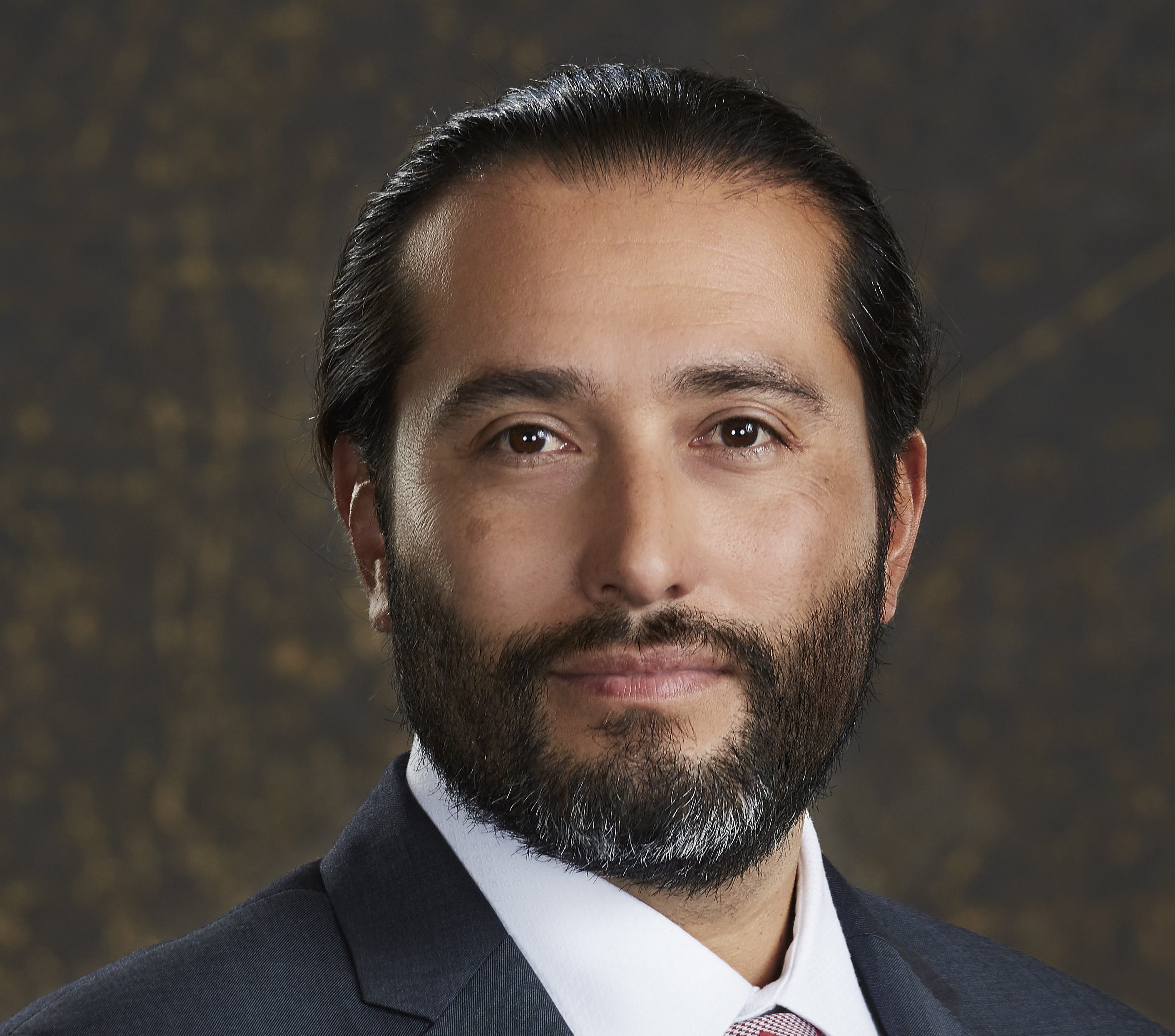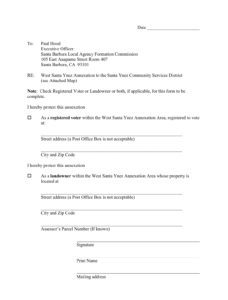
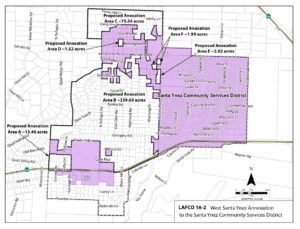
The voting form is available at www.sblafco.org if anyone has thrown theirs away on accident.
By Raiza Giorgi
A crowd of frustrated Santa Ynez residents gathered Wednesday night to ask questions about annexation to the Santa Ynez Community Service District’s sewer system, but most of all to express their outrage over the way the annexation process has been handled.
The biggest complaints centered on inadequate notification about the district’s plan to annex more than 400 acres and nearly 400 homes in western Santa Ynez.
“This is completely un-American and we demand an apology, the way this came out. I am not against a sewer system, but I am insulted this wasn’t handled more professionally,” Bob D’Ambra of Santa Ynez told the SYCSD board.
The SYCSD provides wastewater collection through a system that has about 700 customers, centered in the Santa Ynez township. The effluent collected is sent to the city of Solvang’s wastewater treatment plant. Homes and businesses in unincorporated areas outside the SYCSD boundaries rely on septic tanks.
Many other Santa Ynez residents had raised concerns after they received a letter dated May 27 from LAFCO, the Local Agency Formation Commission, titled “Notice of Protest Hearing,” without much information about what was happening. LAFCO is the agency that oversees formation of special districts and any changes to their boundaries.
“I have had my septic system for 40 years and there’s no problem, and if there ever is I will fix it myself. This process is so costly and intrusive I am not in favor, and I object to the way the ballot is rigged,” said David “Buzz” Clancy.
The LAFCO letter announced a hearing to protest the annexation at 11 a.m. June 30 at the SYCSD office, 1070 Faraday St. in Santa Ynez. There will be no public comments at this meeting, according to residents who have called LAFCO for more information.
Clancy said the LAFCO protest letter looked like junk mail. He happened to hear about the issue from a neighbor and rechecked his mail to find it. The letter included a protest form, but Clancy said some of his neighbors said they had already thrown theirs away.
“I moved to the Santa Ynez Valley so I didn’t have to be told what to do. I don’t like when the government comes in and says what’s best for me,” Clancy said.
If residents don’t turn in their ballots, their votes will be considered to be approval, according to the SYCSD board.
“We will be walking to all our neighbors to make sure they know about this,” said David Beard of Skyline Park in Santa Ynez.
Beard is the president of his neighborhood’s water district, which had sent a letter to SYCSD after finding surveyors on private property and asking them what they were doing.
“We told them we weren’t interested, and we were told we wouldn’t be included in the sphere of influence, and now we are. If they had come to us six months ago and gave more information so we could all make informed decisions it might have been a different outcome,” Beard said.
In its own letter dated June 9, the district said a benefit of the annexation would be a cost savings if a homeowner eventually needed to connect to a sewer. The letter said it might cost $5,000 for a homeowner to apply for annexation individually, while annexing the 400 acres all at once would mean “the cost per individual is an average of $200.”
At the June 15 meeting, however, a board presentation and answers to the public’s questions showed that a person’s total cost for connecting to the sewer system could be $25,000 or more. For those who can’t pay that as a lump sum, an option would be available to pay the fees over 20 years as part of the person’s property tax bill.
With user fees and other costs of the sewer system added to the extra property taxes, a homeowner who financed the $25,000 initial costs could end up paying about $200 a month.
If a homeowner with a failing septic tank had to annex to the district alone, total costs would typically be about $40,000, according to Hodge, compared to about $25,000 for a home within the district.
“What about those on fixed incomes? That’s a lot of money every month, and who gives authority to do this process without talking to the people first? What is the mechanism we go through, engineering-wise?” asked resident John Reece.
Hillary Hauser, executive director of Heal the Ocean, an environmental activist group based in Santa Barbara, said Carpinteria had a similar situation, but the full costs of connecting to sewers won’t be known until more work has been done.
The SYCSD letter signed by General Manager Jeff Hodge says the district is being “proactive” with the annexation process, which was prompted by new regulations from the state’s Regional Water Quality Control Board regulating septic systems.
Anyone annexed to the service district will not be required to connect to SYCSD’s sewer system, Hodge said, but will have a better opportunity to connect if needed.
If the annexation is approved, the district may receive grants and other assistance to offset the costs of constructing sewer lines where they don’t already exist, he said. Presumably, such grants would reduce local costs.
In response to audience questions, the board also acknowledged that it has discussed possible construction of a treatment plant near Sunny Fields Park in Solvang, and that any customer inside the sewer district would also bear a share of those capital costs.
“Is there a high level of septic failure, and does it make sense to connect? What are the design costs, and will the owners be responsible for paying septic abandonment costs as well as ripping up roads and landscaping to put in the lines?” asked JoAnn Hammond, who lives in the area to be annexed.
Residents were also upset that officials from LAFCO were not at the meeting to ask more detailed questions.
The SYCSD’s website, www.sycsd.com, has been disabled. Its phone number is 688-3008. Hodge’s email is jhodge@sycsd.com. LAFCO can be reached at 568-3391 or lafco@sblafco.org.
**********************
In a separate but related issue, Los Olivos residents filed an appeal in March after learning that the SYCSD had applied to LAFCO to annex their area. They went before the LAFCO board on June 2 and got a decision to delay the application for six months until more studies are done, according to Mark Herthel of the Los Olivos Wastewater Steering Committee.
“We are excited the county is moving forward with the focus feasibility study … the committee is sponsoring the financial feasibility study, and we hope to have results by the end of July, which we will present and hopefully make a decision at our September forum,” Herthel said.
The unincorporated town of about 1,000 people has been plagued for decades by failing septic systems. Santa Barbara County declared Los Olivos a “special problems area” in 1974 because of its septic problems.
Los Olivos’ issue is a high water table, which prevents separation between groundwater and the effluent in septic leach fields, according to a report done by MNS Engineers in 2010, so there is a heightened risk that wastewater can come into direct contact with groundwater.
A septic system that fails, especially if it is not up to current standards, can cost thousands of dollars to upgrade, according to David Brummond, supervisor with the county’s Division of Environmental Health Services.
The county has recommended forming a special district that would assess Los Olivos customers to pay for a system that pumps treated waste from individual septic tanks to a communal tank for further treatment and then disposal on a common leach field.
To read the revised draft of the Los Olivos Wastewater Management Plan online, go to www.losolivoswastewater.com

